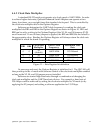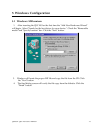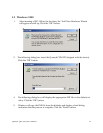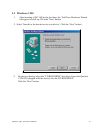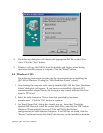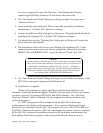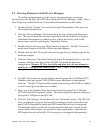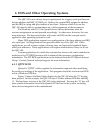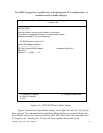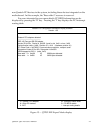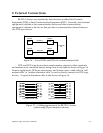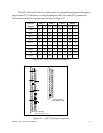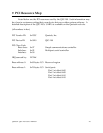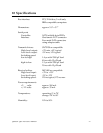
6 DOS and Other Operating Systems
The QSC-100 is not a direct drop-in replacement for a legacy serial port because
its base address and IRQ 3 (COM2), etc. Rather, the system BIOS assigns the address
and the IRQ in a plug-and-play fashion at boot time. Software which is to use the
QSC-100 must be able to accommodate any valid assignments of these resources
For Windows and OS/2, the Quatech device drivers determine what the
resource assignments are and proceed accordingly. In other cases, however, the user
must intervene. The discussion below will center on DOS, but the concepts can be
applied to other operating systems as well.
Many DOS applications support user configuration of the base address and IRQ
of a serial port. Such applications can generally make use of the QSC-100. Older
applications, as well as some custom software, may use hard-coded standard legacy
serial port addresses. These applications will require modifications if they are to use
the QSC-100.
Custom applications for which the customer has source code can be modified to
make just a few PCI BIOS function calls to obtain all the necessary configuration
information. The PCI BIOS specification can be obtained from the PCI Special Interest
Group. Contact Quatech technical support for more information.
6.1.1 QTPCI.EXE
Quatech's "QTPCI" utility supplies the information required when modifying
the serial port settings of the application. This program should be run from real DOS,
not in a Windows DOS box.
Figure 13 shows the Basic Mode display for the QSC-100 after the "Q" key has
been pressed. In this example, the QSC-100 uses I/O base address FF80 hex and IRQ
11. The hardware revision of the QSC-100 is also displayed. Pressing the "N" key will
show similar information for all non-Quatech PCI devices in the system, including
those devices integrated on the motherboard.
Quatech QSC-100 User's Manual
20



